AUTOMATE CONFERENCE AGENDA
Our conference is a game-changing experience for those looking to sharpen their skills or deepen their automation knowledge. Come learn from accomplished industry professionals who are shaping the future of automation and get practical solutions you can leverage right away. The conference also serves as the North American edition of the International Symposium on Robotics (ISR) sponsored by the International Federation of Robotics.
The Automate Conference is an additional fee, while the Automate Show is free for all registrants. To access our conference sessions, please purchase your pass during registration. You can purchase a single-day pass or an all-access pass. Please see our conference page for more information.

Select Your Topic(s):
Filter the conference agenda by selecting the topic(s) you are interested in to see all sessions for that topic. Below the topic buttons, you can also filter by day.
Agenda subject to change. More sessions coming soon.
Advanced Optics for Vision
Stuart Singer, CEO, Schneider Optics, Inc.
Designed for the engineering professional, this course concentrates on real-world techniques for putting together optic systems that work. You’ll learn how to select proper lens components, optomechanical layout, including system bends, and mounting techniques. Prior attendance at a Basic Optics course is encouraged, but not required. |
|
 |
CEO |
Getting Started with Mobile Robots
Robert Bollinger, Owner, Dynamic Horizons Automation Solutions LLC
Mobility is becoming an important part of many integrated manufacturing systems and logistics solutions. This session explores the opportunities created when adding autonomous mobility to your automation menu. We will discuss the key items to consider and pitfalls to avoid when choosing and deploying IMR systems. |
|
 |
Owner |
Getting the Most From Your Robot Investment for Machine Tending- Maximize Your ROI on Cobots & Robots Through Faster Developments and Redeployments With Changing Jobs
Anthony Gillespie, Territory Sales Manager, SCHUNK
Optimizing machining processes, improving output, and maximizing spindle utilization should be primary concerns for all leaders in a machine shop, and investing in robotics has proven, time and time again, to be an effective way of meeting these concerns. While justifying the investments to automation can be easy with high-batch-size machining, high-mix manufacturing often requires changing out in tooling and workholding that can quickly eat away at productivity. To ensure maximum output and a rapid return on investment, industrial and collaborative robots need to be quick to deploy, straightforward, and have the ability to adapt to changing jobs quickly. This presentation will serve to demonstrate how EOATs are advancing to allow flexibility and rapid changeovers in machining processes. Successful automation has to be considered from both the robot wrist and the machine table. Workholding automation also has to be flexible to make the complete working machine ready to adapt to the next challenge. |
|
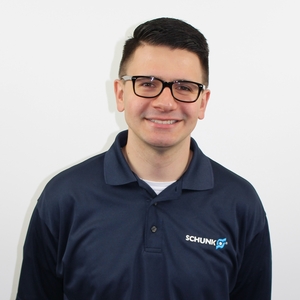 |
Territory Sales Manager |
How to Automate - When It's Time to Automate and How to Choose the Right Partner
Mike DeRosier, Business Development / Safety Manager, Advent Design Corporation
There are times when automation is the right approach, but sometimes the ROI(Return On Investment) is not justified. Learn some simple methods of talking with your vendors and justifying the ROI for your company. Choosing an automation partner is not easy. But some simple steps in your process can help you choose one that fits your needs. This includes one that will help you with ROI. |
|
 |
Business Development / Safety Manager |
Making Sense of the Madness: The Convergence of IT and OT Technologies on the Factory Floor
Mike Lashbrook, Vice President, Digital Solutions, JR Automation
As every industrial company progresses on its journey to realizing Industry 4.0, there are tremendous opportunities to capture value and increase productivity. At the same time there are common pitfalls that can slow teams and siphon time, energy, and investment. With the drastic increase of automation recently driven by onshoring and labor shortages, never before has the need for industrial automation and digital transformation been greater. By understanding the availability of solutions and matching those with a company’s present condition, greater success can be achieved. This discussion will be focused on practical ways to achieve the convergence of IT and OT technologies based on JR Automation and Hitachi’s experiences developing IT/OT custom solutions as well as the INGENOVA360 solution suite. These insights will help customers of all sizes realize their Industry 4.0 ambitions by providing real-world solutions to address:
|
|
 |
Vice President, Digital Solutions |
The Fundamentals of Machine Vision
David Dechow, Industrial Factory Solutions Architect, Motion AI
You’ll learn all the basics, including how images are captured and transferred to the computer, the principles of lighting, and the common processing algorithms used by machine vision systems. Discover how to successfully implement machine vision and how to avoid common pitfalls during the implementation, launch and production phases. This is an ideal training course for people new to machine vision as well as a great refresher course for anyone with machine vision responsibilities. |
|
 |
Industrial Factory Solutions Architect |
KEYNOTE: A NASA-Inspired Approach to Leading Innovation in Any Organization
Gregory Robinson, Former Director, NASA, James Webb Space Telescope
Today, most organizations must innovate or fall behind. But what’s the key to leading innovation and overcoming challenges and failures? It isn’t just about hiring very talented people. At NASA, Gregory Robinson worked with, led and managed some of the world’s most accomplished scientists and engineers. Instead, he says, it’s about prioritizing relationship-building, creativity, knowledge-sharing and “open communication without fear.” Robinson emphasizes soft skills like knowing when to lead and support, understanding how to collaborate, problem-solving, and reaching out beyond your team to find answers and fresh thinking. Using real-life examples from his 33-year history at NASA, set against a backdrop that takes you a million miles from Earth, Greg Robinson shows how the human element is more critical than ever to driving transformation and achieving our most ambitious goals. |
|
 |
Former Director |
The ARM Institute is the nation’s leading robotics and AI manufacturing innovation institute. Over the past six years, the Institute has worked with hundreds of its consortium members on federally-funded projects that advance the state of robotics and AI in manufacturing. This presentation will provide an overview of the ARM Institute process, highlighting projects and activities with significant impact on U.S. manufacturing for both commercial organizations and the defense industrial base. |
|
 |
Director, Engineering |
Automating the Food Chain
Chris Caldwell, Product Manager, Yaskawa Motoman
Feeding nine billion people will require significant efficiency improvements throughout our society. Increasingly various levels of automation and robotics will be adapted into agriculture/cultivation/harvesting of foods, as well as the processing and packaging, and ultimately in quick-service restaurants. Join Chris Caldwell, Product Manager at Yaskawa Motoman as he delves into the industry trends, technology advancements, and solutions that make this such an important area for automation to advance. |
|
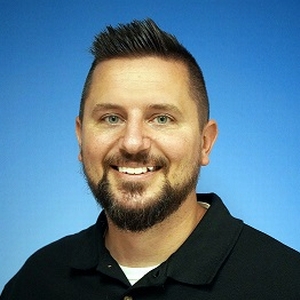 |
Product Manager |
Cybersecurity for Smart Machines: Tackling the Real-World Risks
Nivedita Ojha, VP of Product, FORT Robotics
In today’s machine landscape, cybersecurity threats can have serious physical consequences. A machine security breach could cause much more than a loss of data; it could cripple production, damage property, and worst of all– put worker safety at risk. But how can you secure a machine when it’s part of a complex ecosystem? While a machine itself may be secure in isolation, what happens when it’s functioning in a real-world environment and communicating with other connected machines, mobile devices, networks, and cloud services? Protecting against these risks and successfully deploying machines in a connected worksite requires a new approach to security. A comprehensive and integrated strategy for both IT and OT is required. In this session, FORT VP of Product Nivedita Ojha will discuss how machine developers, integrators, and users can lay a secure foundation for their applications by planning for security risks before they happen. We’ll discuss approaches for: |
|
 |
VP of Product |
Industrial Robots are the heart of Lean Manufacturing and are vital to the current vibrant manufacturing economy in North America. The “Getting Started with Robotics” presentation is an introduction to the Industrial Robotics or Flexible Automation Industry. We will explore Robot Based Automation Systems to include how the industry functions, why to choose robot-based automation, principles of system integration, general principles of robot technology, the business case for automating and calculating ROI plus the common mistakes made in Robot Integration. The attendee will learn through discussion and evaluating system photos and videos illustrating various robotic-based flexible automation systems. |
|
 |
Account Manager |
The Best of Both Worlds: Unlocking the Productivity of AGVs and AMRs
David Northup, Director of Product Management, OTTO Motors
Automated guided vehicles (AGVs) have served the industrial world well for decades. Repeatedly and reliably executing the same material handling tasks, AGVs provide the safety, reliability, and business continuity human material handlers can not. However, in the last few years, autonomous mobile robots (AMRs) have started displacing AGVs due to their dynamic decision-making, creating a system that is as safe as an AGV, but as flexible as a human driver. Manufacturing and warehousing decision-makers are now faced with a difficult choice: Simplicity and predictability or intelligence and flexibility? This talk asks, “Why not both?” In this session, we will share new trends that will help manufacturers get the best of AGVs and the AMRs. Specifically, we will discuss:
|
|
 |
Director of Product Management |
ARM Institute: Evaluating & Minimizing Risk Using Robotics and AI on the Factory Floor
Brent Bregar, Technologist, Premier Automation
Erik Nieves, CEO & Co-Founder, Plus One Robotics
Larry Sweet, Director, Engineering, ARM Institute
Satyandra K. Gupta, Co-Founder & Chief Scientist, GrayMatter Robotics
One of the common challenges that organizations face in deciding to implement advanced manufacturing is understanding whether a process can be successfully automated with robotics and AI. This panel discussion, comprised of members from the ARM Institute ecosystem, will provide insights and share experiences from various perspectives on how to reduce the risk when moving to these advanced technologies. |
|
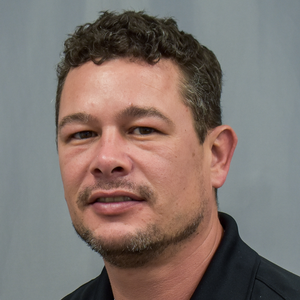 |
Technologist |
 |
CEO & Co-Founder |
 |
Director, Engineering |
 |
Co-Founder & Chief Scientist |
How 4 Unique Businesses Rapidly Launched Commercial Automation Solutions Using Mobile Robotics
Matthew Wicks, Vice President, General Manager, Zebra Technologies
Industries from logistics to agriculture to healthcare services to manufacturing are now harnessing the power of flexible, scalable AMR technology to automate a wide range of tasks to address challenges in their respective markets. In this session, we will discuss various vertical solutions and how mobile robotic technology can optimize workflows in environments as diverse as manufacturing, logistics, agriculture, and healthcare services. AMRs now play a vital role in each of these operations and often collaborate with a human workforce. From automatically transporting parts and components in manufacturing facilities to turn-key fulfillment operations in logistics, mobile robotics can help increase throughput, regain floor space, and allow existing staff to focus on higher value-added actions. In agriculture and climate tech, mobile robots are helping to farm more efficiently, reducing food waste. And in hospitals around the country, service robots assist clinical staff by handling routine tasks. Join us in this session as we review these unique implementations of AMRs, and illustrate the value that a powerful mobile robotics platform can bring to multiple use cases across several vertical markets. |
|
 |
Vice President, General Manager |
How Can Artificial Intelligence Create Manufacturing Agility?
Steffen Klawitter, Digital Enterprise Lead Architect, Siemens
Artificial intelligence makes control logic more agile and manufacturing processes more flexible and precise. During this session, we will show you how AI can simplify challenging applications where there is high variance, small batch runs, or frequent changes due to short product life cycles. Using AI in combination with computer vision, industrial automation, and standard robotics, machines no longer require special programming to perform specific tasks, as they can now learn from their own experiences. |
|
 |
Digital Enterprise Lead Architect |
Important Applications for SMART Actuators
Edward Neff, Founder and CEO, SMAC Corporation
There is a growing realization in automation that just doing the work is no longer enough. More is needed: The ability to determine in real time if the work is done correctly, the ability to adjust the work parameters to fit the individual items being worked on, and monitoring the workstation to ensure it is functioning correctly. Ed Neff will discuss real-world scenarios such as camera lens assembly in smartphones, welding wires in automotive safety devices, and filling and dosing applications that are leading the way with smart actuators. |
|
 |
Founder and CEO |
Advanced Vision Lighting
Steve Kinney, Director of Training, Smart Vision Lights
The advanced lighting session will dive deeper into the main machine vision lighting principles of illumination, reflection, emission, absorption and transmission and how these can be exploited to create high contrast images for inspection and code reading. The course will go through the fundamental concepts in greater detail, and then through the more advanced concepts of color, multi-light, photometric stereo and multispectral imaging, detailing all from both the theoretical and practical viewpoints. |
|
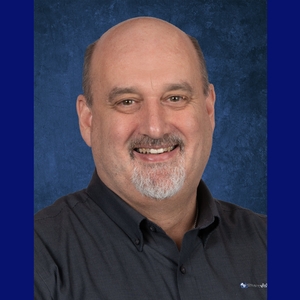 |
Director of Training |
Adapt Your Manufacturing Process: Do More With Less
Steve Alexander, Vice President of WI Operations & Standard Products, Acieta
Manufacturers today face a major paradox: high demand for faster lead time and a dwindling workforce. Integrating robotic automation into your manufacturing process frees up floor space and increases productivity, all with fewer workers. Greg Morehouse will expand on the benefits of robotic automation and how to choose the right robotics integrator. He will share real-world examples of how automation has helped Acieta customers address labor shortages, increase capacity, and position their business for future growth. |
|
 |
Vice President of WI Operations & Standard Products |
Beginning Optics for Machine Vision
Nicholas Sischka, Director, Imaging, Edmund Optics
This course teaches the fundamentals for optics for machine vision and robotics. Students will learn the fundamental parameters of an imaging system and why they are important, as well as how to choose a lens using first order parameters. The course then teaches the concept and real-world applicability of the modulation transfer function (MTF) and how to manipulate an MTF with different variables to change things such as the depth of field. Lastly, the course will introduce telecentric lenses and how they are different from more traditional imaging optics. |
|
 |
Director, Imaging |
Fusion of Time-of-Flight and Structured Light Scanning for 3D Machine Vision
Daniel Lau, Professor, University of Kentucky
This presentation will describe research performed at the University of Kentucky to use time-of-flight depth video to unwrap high-frequency phase data collected using a fringe projection structured light scanner. The resulting video provides 3D scans with the scan quality characteristic of structured light scanning at the high video rates of time-of-flight cameras. The described system will be assembled from commodity hardware. In addition to offering instructions on how to build the TOF+SLI system, this presentation will also review the calibration process used to align the fields of view of the two image sensors. Finally, the described system will be demonstrated for applications in collaborative VR environments. |
|
 |
Professor |
Global Production Language - OPC UA Companion Specifications as the Basis of Networked Production
Johannes Olbort, Project Manager II4IP, VDMA e.V.
For humans, language is of central importance in order to communicate with each other. Language connects and enables understanding. But what about the machines in an increasingly networked production? How can communication and the exchange of information succeed among different types of machines from different manufacturers? Answer: with a Global Production Language. The challenge here lies in the definition of "grammar" and "vocabulary" for the exchange of information from machine to machine and from machine to applications such as MES. |
|
 |
Project Manager II4IP |
Mobile Robots in Manufacturing – What Have We Learned So Far?
Denise Stafford, Business Development Manager, KUKA Robotics
Looking to keep up with the continually growing demands of a competitive global marketplace, today’s manufacturers are seeking creative ways to solve complex production challenges. Many have turned to mobile robots, with or without a robotic arm integrated. These vehicles use a combination of intelligent software and sensors to navigate crowded factory floors and perform a wide range of complicated tasks in different industries. But how serious is this trend, what are the experiences that manufacturers made, and how do you get started with this technology? |
|
 |
Business Development Manager |
AI for AMRs: A Synergistic Approach to Unlocking the Value of Autonomous Mobile Robots for Your Operations
Adopting autonomous mobile robots (AMRs) into wide-scale operations is still in its infancy stage – and artificial intelligence could well be the critical component needed to accelerate their adoption worldwide. While AI has developed into somewhat of an abstract and confusing “buzzword” across all industries, the potential is massive and wide-reaching, and real-world use cases with AMRs already demonstrate the benefits AI can offer. In this session, we will simplify the conversation around AI and zoom in specifically on the landscape of AMRs, highlighting how AI is (or soon will be) unlocking incremental value to your operations. |
The Business Case for Collaborative Robots
Bryan Bird, Regional President, US/Canada, Universal Robots
In the manufacturing sector, businesses persistently face the urgency to adapt to new, innovative changes in technology to keep up with demand and stay competitive. Regardless of the industry, automation continues to transform businesses of all kinds, elevating their bottom line. In this session, Bryan Bird, Regional President, US/Canada for Universal Robots, will introduce the business case for cobot automation. In addition to these business trends and cobot installation strategies, he will share the stories of real manufacturers who successfully deployed collaborative automation systems in their manual processes to expand your business and increase productivity. |
|
 |
Regional President, US/Canada |
Using Git to Achieve Your IT/OT Convergence Goals
Adam Gluck, Founder & CEO, Copia Automation
In the industrial automation space, information technology (IT) teams and operational technology (OT) teams have been living in different universes. Despite new opportunities for collaboration, many industrial companies today are still managing two separate IT and OT technology stacks. As the amount of software driving industrial operations has increased, the desire to have IT manage the infrastructure for both IT and OT has emerged. The ultimate goal for this alignment is to drive greater operational efficiency and ownership across the organization. Git-based source control offers an easy path to bridge the gap between existing industrial technologies and modern software toolchains. ITs familiarity with Git, coupled with its ability to instantly improve access control and traceability, makes it a low-risk solution to implement, and enables OT teams to improve development workflows when used with other modern tools that are now available to industrials. The alignment allows IT teams to abstract away OT toolchains and focus on supporting infrastructure they are familiar with. They can then better leverage their existing infrastructure, reduce maintenance overhead, standardize where data storage occurs, enable auditability and traceability, and improve security. |
|
 |
Founder & CEO |
Vision Standards Update
Bob McCurrach, Director of Standards Development, Association For Advancing Automation
Suprateek Banerjee, Head of Standardization, Robotics and Automation, VDMA e.V.
Get the latest information on global vision standards from the experts. Join Bob McCurrach from A3 Vision & Imaging and other vision experts for this important update. |
|
 |
Director of Standards Development |
 |
Head of Standardization, Robotics and Automation |
Advanced Camera & Image Sensor Technology
Steve Kinney, Director of Training, Smart Vision Lights
Explore the different levels of image quality at the sensor level. Details relating to quantum efficiency, dark noise, signal to noise ratio will be discussed in detail. In addition to topics related to area scan cameras, the proper usage of line scan and TDI cameras will be reviewed. Sensor size classification and relationship to the camera’s lens mount will be covered. |
|
 |
Director of Training |
Change the Way You Design Your Automation Using Smart Conveyance
Ben Hope, Director of Product Commercialization, SuperTrak CONVEYANCE
During this session, Ben Hope, SuperTrak CONVEYANCE’s Director of Product Commercialization, will take a closer look at how engineers can design and develop high-performing automation with less risk by utilizing higher speeds, tighter precision and independent shuttle control enabled by Smart Conveyance. By using a Smart Conveyance, engineers gain access to greater integrated functionality in an easy-to-use interface. This reduces engineering complexities and ultimately allows products to enter the market faster and more efficiently, resulting in a greater ROI from your automation. |
|
 |
Director of Product Commercialization |
Manufacturing Automation: Make Business Safer and Greener
Sean Murray, Vice President of Customer Success, Bright Machines
This presentation will focus on how the next generation of automation in manufacturing will bring a balance to the industry that’s been lacking over the past few decades: scale and flexibility. This new balance also has important implications for workplace safety and the environment. An industry veteran with over two decades of experience, Sean Murray will share examples from his past and current work illustrating the benefits to people and planet that come from automation. |
|
 |
Vice President of Customer Success |
The Start of a New Era: the Democratization of Industrial Automation
Etienne Lacroix, CEO, Vention
We’ve never talked about industrial automation as much as we have in 2022. Yet, despite the chatter, most manufacturing plants in North America have little to no automation. There’s a simple reason why the vast majority of manufacturers cannot profitably automate their production—because automation technology was developed (and priced) for high-throughput manufacturing. Most North American manufacturers, with high-mix production and volumes of less than a few thousand units, simply don’t have the scale to earn back the steep investment that traditional automation technologies command. Today’s industrial automation technology is complex to evaluate and integrate. Most manufactured products are unique to the manufacturer and often require production equipment that is unique. In other words, the vast majority of industrial automation is a non-productized market, requiring custom solutions. If access to automation technology is limited only to those who can afford premium engineering services or customized integrations, incumbent component manufacturers aren’t under any pressure to democratize technology. The result? A status quo that benefits current industry participants, but that leaves most manufacturers—the ones who would actually benefit from technology democratization—behind. All industries go through phases, from complex to democratized and back again. One example is computers. We went from complex mainframes in the 1960s and 70s, to much simpler PCs in the early 2000s. We are now slowly moving toward another complexification phase with quantum computers. At each phase, new giants emerged, and some were left behind. As cloud technology, robotics, and machine vision converge, industrial automation is initiating its phase of democratization and ushering in new players. That’s good news for both the automation industry and high-mix manufacturers. |
|
 |
CEO |
Updates on Mobile Robot Interoperability Efforts
Daniel Theobald, Founder and Chief Innovation Officer, Vecna Robotics
Florian Pestoni, CEO & Co-founder, InOrbit
Jason Walker, VP, Market Development, Locus Robotics
Advances in robotics technology are lowering the barriers for companies of all sizes to adopt autonomous mobile robots (AMRs) and automation, especially in the manufacturing industry. This rising demand for AMRs and the increasing specialization of these robots continues to push the need for interoperability, as these different types and brands of robots are more often operating in the same space. Come and hear about the latest trends impacting AMR interoperability and efforts MassRobotics and others are doing to encourage the development of standards that allow the systems to better work together. |
|
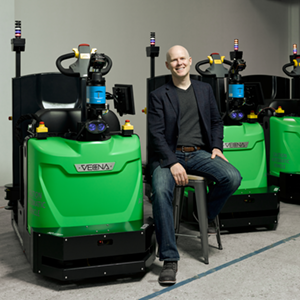 |
Founder and Chief Innovation Officer |
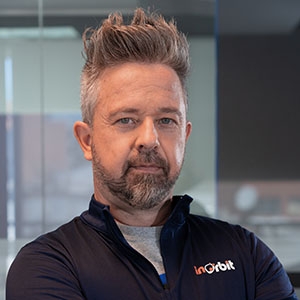 |
CEO & Co-founder |
 |
VP, Market Development |
3D Vision System Development
James Anderson, Digital Business Consultant - Vision and Quality Control, SICK
Learn how advancements in 3-D camera technology are enabling new solutions for more applications than ever before. Review the many vision-based 3-D measurement techniques and which achieve the best results for different application scenarios. This session will provide real application techniques you can use in electronics, pharmaceutical, food & beverage, aerospace, automotive and many other industries.” |
|
 |
Digital Business Consultant - Vision and Quality Control |
Advancements in Robotic Paint Spot Repair in Automotive Production
Aaron Nienaber, Product Development Specialist, 3M Company
Virtually every car coming off the paint line has defects that require locating followed by repair to ensure the level of finish quality which customers expect. To this day, most manufacturers rely on dozens of highly skilled operators, some of which may inspect and repair up to 140 vehicles per shift. This makes topcoat defect repair one of the most highly manual operations in the industry, introducing a litany of challenges:
This presentation highlights the advancements made in developing and deploying automated inspection and repair processes, which can address the many challenges outlined above. Critical to the success of deploying an automated process include the proper tooling design which can deliver the needed process parameters and alignment of those parameters to the optimum consumables which, in combination, deliver the needed results. In addition, the development of software -- which can select the right parameters and repair recipes based on information about a particular defect -- is a key enabler to successfully automating this highly manual process. |
|
 |
Product Development Specialist |
Beginning Lighting for Machine Vision
Daryl Martin, Technical Sales and Product Specialist, Advanced illumination
This course focuses on providing the attendee with a background and a basic set of tools to apply a more rigorous analytical approach to solving lighting applications. Topics covered include overview of light, lighting geometry and structure, color tools, filters - illustrated by examples and graphics. We also briefly address LED technology, safety, radiant power measurements, illuminator strobing and preview advanced lighting non-visible and geometry techniques. |
|
 |
Technical Sales and Product Specialist |
Machine Vision Integration Made Simple
Eric Hershberger, Principal Application Engineer, Cognex
This will be an interesting talk describing the top 10 tips and tricks that I have used over a long career to make integrating machine vision simpler. I will discuss PLC logic, the use of standard templates, and working with applications people to identify pain points and problems with your machine vision integration. |
|
 |
Principal Application Engineer |
OPC UA Enables Smart Manufacturing from Sensor to Cloud
Michael Clark, Director OPC Foundation North America, OPC Foundation
The OPC Foundation is the gravity center for secure industrial data interoperability and, as such, facilitates the global automation community with standardized data modelling across all transports and platforms, fully authenticated and encrypted for assured data integrity and cybersecurity. In this presentation, learn how the initiatives of the OPC Foundation are supporting interoperability across multi-vendor systems from field devices to cloud and enterprise domains, while remaining platform, encryption, and transport agnostic. |
|
 |
Director OPC Foundation North America |
Securing Autonomous Mobile Robotics Deployments in the Warehouse
Fouad Khalil, Senior Director, Enterprise Security, Risk and Compliance, Locus Robotics
Warehouse robotics customers face operational challenges in successfully deploying and protecting rapidly changing technologies – often with IT or security teams already facing staffing and skills shortages. Especially when deploying in a do-it-yourself model, customers are at elevated risk of the following business impacts:
|
|
 |
Senior Director, Enterprise Security, Risk and Compliance |
Basic Machine Design and the Physics of Motion
Brian Regan, Sales Engineer, DINGS' Motion USA
Introduction to basic machine design concepts and physics behind electro-mechanical motion control. |
|
 |
Sales Engineer |
Tom Izzo shares invaluable leadership lessons from his life's work as a Hall of Fame basketball coach and a beloved mentor. With a career record of 606-232 leading into this season, it’s easy to see that Izzo knows how to win, but he also knows how to win the right way. He has the fifth-most wins of any college coach. He's been to eight Final Fours. But perhaps, most importantly, 86% of his players left with a college degree. You don't need to be a Spartans fan to learn from Izzo's track record of success. |
Additive Manufacturing for Robotics & Automation 101
Joshua Alneter, Project Engineer, eCMMS Foxconn
Liz Stortstrom, Application Engineer, HP 3D Printing
Paul DeWys, Sales Engineer, Forerunner 3D Printing
Wagon Wills, Chief Engineer, Gonzalez Production Systems
Every day, more and more robotics & automation machine builders, component suppliers, and system integrators are turning to additive manufacturing to solve some of their toughest design challenges. Industrial 3D printing technologies have advanced greatly over the past 5 years and have become a go-to manufacturing solution for many companies. 3D printed components have gotten stronger, cheaper, and can hold tight tolerances suitable for many industrial applications. In this presentation, we will cover all the basics including:
Throughout the presentation, we will reference dozens of real-world use cases. |
|
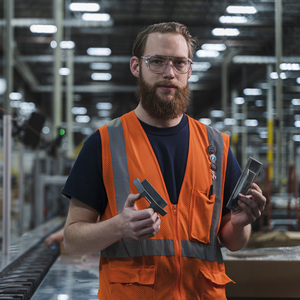 |
Project Engineer |
 |
Application Engineer |
 |
Sales Engineer |
 |
Chief Engineer |
Building the Business Case for AGVs/AMRs in Logistics & Manufacturing
Matt Wade, VP of Marketing, BlueBotics
Matthew Slack, Business Development Lead, Oceaneering Mobile Robotics
Today the mobile robotics market is thriving, owing to hiring and retention challenges, and the need to build more productive, competitive and resilient businesses. However, determining the value that mobile robotics such as AGVs and AMRs can bring to your operation, and making a business case for this technology, can be a challenge. In this educational session, BlueBotics and its partner Oceaneering Mobile Robotics will walk you through the process. After covering the key drivers of mobile robotics, and exploring the relative pros and cons of these solutions, our two speakers will dive deep into the key factors impacting the ROI of AGVs and AMRs. We will then bring these learnings to life with two in-depth case studies from the U.S. manufacturing sector. |
|
 |
VP of Marketing |
 |
Business Development Lead |
How Cognitive Robots Enable Safe and Natural Human-Machine Collaboration
David Reger, CEO and Founder, NEURA Robotics
Robotic automation has led to a level of efficiency, precision, and scale in manufacturing that would have been impossible to achieve with conventional human labor. Such machines are now commonplace in various industries, providing productivity gains while relieving human workers of mundane and dangerous tasks. Most of these robots are used in production lines and are programmed to repeat a specific task at a time, such as moving objects between predefined locations or assembling basic components. Although these robots now reliably outperform humans in terms of speed and accuracy, they're unaware of their surroundings and must be isolated in safety cages or behind protective fences. Today's fast-paced industrial landscape has led to the development of collaborative robots (cobots) that can work with humans in shared environments. However, today's cobots lack human-like awareness and are unable to operate as efficiently and safely as would be required for a universal solution. For this reason, cobots throughout the industry typically require a fence or barrier to protect workers and to run at full speed, which defeats the original idea of collaboration. To enable true human-machine collaboration, cobots need senses to perceive their environment and cognitive intelligence to safely interact with humans in different environments. So-called cognitive robots create truly collaborative environments where humans and machines can work together to achieve a common goal. And with rapid improvements in their abilities to learn, think, and interact, they are poised to reshape productivity and safety in commercial and social environments all over the world. These cognitive capabilities for robots will be the critical components of comprehensive systems that, in combination with other technologies, will provide holistic solutions for caring for the disabled and elderly, assisting in hospitals and medical care, and providing mobility for everyone. With integrated, ever-improving sensors and AI systems, cognitive robots could even develop the social intelligence needed to hold longer conversations, play games, and keep company with people who need help. Ultimately, to bring cognitive robots to all industries and all areas of life, it’s not only the robot manufacturers themselves who must develop and bring intelligent robots to market. Indeed, it’s critical to build a community of leading industry partners from all possible segments to enable collaboration and co-creation to create intelligent automation solutions that make a difference in businesses and personal lives. In a nutshell, the cognitive capabilities of robots don’t only help industrial companies to succeed but also enable everyone to spend more time doing what they love to do. |
|
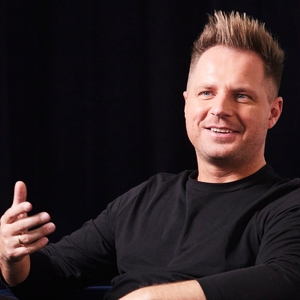 |
CEO and Founder |
Mechanical Motion Control Components and Subsystems
Keith Knight, Director of Business Development, Invio Automation
Introduction to what a typical motion control system consists of and the typical mechanical components and subsystems it contains. |
|
 |
Director of Business Development |
Mitigating Parcel Variability With an Adaptable Vision Perception Software
Erik Nieves, CEO & Co-Founder, Plus One Robotics
Data on the number and type of picks handled at warehouse and distribution centers, plus insights gleaned from customers, experts, and salespersons, all point to the fact that the volume usually associated with “peak season” is now common throughout the year. This year-round pressure on fulfillment centers is exacerbated by the use of alternative packaging, special boxes, and even decorative tape during certain seasons and holidays. When considering solutions that promise increased throughput, it’s important to remember that ecommerce fulfillment and distribution centers are predicated on variability - not repeatability. And your automation solution should reflect this. In this session, Erik Nieves will discuss the shifting distribution of parcels in fulfillment and distribution centers and how utilizing an adaptable vision system, equipped with supervised autonomy capabilities, is the best way to approach an increase in volume and variability. |
|
 |
CEO & Co-Founder |
Introduction to Machine Learning
Andrew Long, CEO, Cyth Systems
Intro to Machine Learning |
|
 |
CEO |
Deep Learning at the Edge
James Witherspoon, Product Manager, Zebra Technologies
Deep Learning continues to be a focus and driving force in the industry. There are always options and choices when deploying systems, including centralized and edge-based deployments. Come learn about some of the best practices for deploying deep learning using edge devices. We will also discuss some pitfalls to avoid and best practices when dealing with deep learning. |
|
 |
Product Manager |
How Automation Can Drive Speed to Market and Reduce Costs for Low-Volume Custom Manufacturing
Riley Hall, Director of Product Marketing, Fictiv
For many engineering teams, custom part sourcing is fraught with manual workflows that create drag in new product development and limit team productivity and time-to-market. To help manufacturing leaders address this issue, this session will explore opportunities to leverage automation in low-volume custom manufacturing, accelerating product development and reducing costs and quality issues associated with managing a fragmented custom parts supply chain. Using case studies and best practices from leading enterprise organizations, Riley Hall, Director of Product Marketing, Fictiv, the operating system for custom manufacturing that makes it faster, easier, and more efficient to source and supply custom mechanical parts, will help attendees understand the steps to take to simplify and streamline their custom parts supply chain using the power of automation. Relevant to any room where business leaders gather, Riley’s front-line experiences at both Fictiv and industrial manufacturing companies, coupled with his objective insights and inspirational presentation style, will frame a must-see session for attendees searching for answers in the age of global supply chain uncertainty. |
|
.jpg) |
Director of Product Marketing |
Mobile Robot Risk Assessment
Robert Bollinger, Owner, Dynamic Horizons Automation Solutions LLC
Risk assessment is a key step in the development of safety solutions for all robot systems. When IMRs are part of the system, the risk assessment approach needs to be expanded beyond the typical task/hazard pairs of traditional systems. This session explores the additional scope and to be considered when autonomous mobility is introduced. |
|
 |
Owner |
Understanding Inertia and Reflected Inertia
Keith Knight, Director of Business Development, Invio Automation
The importance of inertia in electro-mechanical motion control systems and how the inertia of the components in a motion control system affects its performance. |
|
 |
Director of Business Development |
You've Automated Your Welding, Now What? Add Further Efficiencies by Automating Your Weld Grinding Process
Jerry Perez, Executive Director - Global Accounts, FANUC America Corporation
Kyle Drummer, General Manager, Lincoln Electric Automation
Tyler Naatz, Senior Application Engineer, 3M
Learn from the two leaders in Robotic Weld Grinding, 3M and Lincoln Electric Automation, about the possibility and benefits of automating your weld grinding step.
|
|
 |
Executive Director - Global Accounts |
 |
General Manager |
 |
Senior Application Engineer |
Advances in Robotic Gripping, Manipulation & Guidance
Aaron Royster, CoLab (Collaborative Laboratory) Manager - Robot EOAT Application Developme, SCHUNK
Harley Green, Director of Business Development, Soft Robotics Inc
Kurt Häusler, CEO Sensors & Automation North America, Photoneo s.r.o.
Manuel Sordo, Chief Revenue Officer, Apera AI
Nick Longworth, Senior Systems Application Engineer - Robot Guidance, SICK, Inc.
Until very recently, advanced robot picking and grasping was viewed as the Holy Grail of robotic automation. What’s easy for a human is not easy for a robot. But innovations in gripping, software, and robotics have rapidly improved capabilities — increasing the number of possible applications. It’s now simpler, quicker, and cheaper to automate sophisticated solutions in manufacturing, assembly, logistics, warehousing, packaging, and surface finishing. Hear from industry experts on the latest trends, solutions, and technology:
|
|
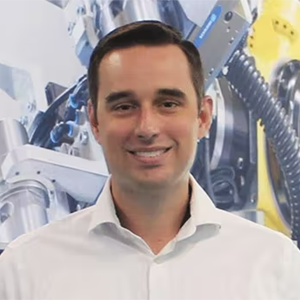 |
CoLab (Collaborative Laboratory) Manager - Robot EOAT Application Developme |
 |
Director of Business Development |
 |
CEO Sensors & Automation North America |
 |
Chief Revenue Officer |
 |
Senior Systems Application Engineer - Robot Guidance |
Designing Linescan Vision Systems
Dale Deering, Senior Director, Business Development, Teledyne
In this course, you learn about Line-scan imaging, and how using a scanning technique can be beneficial for efficient image capture of moving objects. Topics cover components for line-scan image acquisition, when to use line-scan, how to achieve optimum results, and trends in the industry. When you complete this course, you will be able to recognize candidate applications for line-scan imaging and understand how to develop and implement line-scan solutions. |
|
 |
Senior Director, Business Development |
IIoT And The Smart Factory: Device Protocols To Effectively Move Data From The Sensor To The Control & Enterprise Level
Tom Knauer, Global Strategy Manager - Robotics & Automation, Balluff GmbH
Sensors are the eyes, ears, and skin of the factory, and are the basic devices for gathering data for IIoT applications and Smart manufacturing. In the past, sensors were individually wired to machines and controllers, requiring many cables and a lot of time to set up the system. Their data was also very limited (on/off, analog values, etc.), and gathering and using this data in IIoT applications was cumbersome. |
|
 |
Global Strategy Manager - Robotics & Automation |
Linear Transport Systems Evolve, Take on Advanced Robotic Functions
Jeff Johnson, Mechatronics Product Manager, Beckhoff Automation
When people think of industrial robots a few archetypal technologies come to mind – a five- or six-axis articulated robot arm or perhaps a 3D delta kinematic robot or even a mobile robot such as an AGV or AMR. With recent technological breakthroughs in linear transport technology, however, robot-style functions can now come in a dramatically different format that can truly be embedded into machines rather bolting on as a separate module. Modern linear transport systems move parts and products dynamically using wireless movers that are intelligently controlled around a track consisting of linear motor modules. This presentation will provide a variety of use cases where the use of a mechatronic linear transport system can offer key advantages over traditional robot formats. New breakthroughs allow engineers to design solutions for dynamic product handling, machining and measuring in parallel with product transport. Its strengths also assist with adapting production machines for rapidly changing production lots:
|
|
 |
Mechatronics Product Manager |
The Growing Need for Robot Orchestration
Florian Pestoni, CEO & Co-founder, InOrbit
End users across industries increasingly rely on automation to remain competitive and respond to existential threats. Logistics and supply chain companies, from brands and retailers to 3PLs, are at the forefront of integrating autonomous robots into their operations. However, as they add more robots across sites and for a growing number of tasks, such as trailer unloading, depalletizing, pick and place, inventory tracking or cleaning, they are facing increased complexity and coordination issues that jeopardize the productivity gains that can be achieved through these solutions. Robot developers should focus on their specific solution to ensure their robots operate optimally. Expecting a single manufacturer to develop and commercialize robots for every possible use case is just not feasible. A solution designed for a specific purpose, such as transporting pallets, would not work to manage a different type of robot, such as a robotic putwall or a floor scrubber. There has been some progress recently on emerging interoperability initiatives for mobile robots, including VDA-5050 and MassRobotics AMR interoperability. These efforts, which have yet to achieve broad adoption, are only part of the solution: they provide a technical mechanism to exchange data. However, what end users actually need is scalable, multi-vendor orchestration and robot operations software to make it possible for different types of robots to work together in harmony. This presentation will cover the current state of interoperability and specific use cases for robot orchestration, equipping decision-makers with the information they need to continue expanding automation throughout their operations. |
|
 |
CEO & Co-founder |
Introduction to Magnetism and Motor Basics
Mark Holcomb, Owner, Dynamic Systems Engineering
Basics of magnetics and the types of magnets found in motors. Overview of the basic function and styles of electric motors commonly used in industrial automation, including the operating difference between brushed, brushless, step, AC induction, and direct drive motors. |
|
 |
Owner |
The Fundamentals of Camera and Image Sensor Technology
Kevin M. McCabe, Senior Application Engineer, IDS Imaging Development Systems Inc.
Gain an understanding of digital camera principles. Find out about different camera types and their capabilities. Learn about what digital interfaces these cameras use, from Gigabit Ethernet to Camera Link HS. Other topics include how image sensors capture light, basic understanding of image quality terms, digital camera parameterization, and the capabilities of monochrome versus color sensors. |
|
 |
Senior Application Engineer |
Enabling Smart Mobile Robots Using 5G Private Networks - A Case Study
Per Treven, Director Business Development, Manufacturing, Ericsson
In the future, Autonomous Mobile Robots (AMRs) will drive business impact across a spectrum of manufacturing cases. They can reduce human risks, work with greater reliability, reduce downtime, lower costs and deliver higher productivity and quality. Integrated with AI, Lidar sensors, 3D cameras, mapping software, and portable laser trackers, AMRs can navigate safely and perform automated tasks. However, the lack of ubiquitous wireless connectivity can inhibit the pace at which AMRs become automated and mobile. To enable free movement, manufacturers will need to process and manage large amounts of data, as well as have highly reliable, low-latency connectivity that is secure and able to provide real-time data transfer. 5G private cellular networks can provide this level of connectivity supporting ultralow latency and connection speeds exceeding 2 Gbps. With 5G, AMRs can move throughout the factory with positional accuracy and can maneuver freely in a facility with a high density of connected devices. One of the advantages of 5G private cellular networks is they can be built using shared spectrum like Citizens Broadband Radio Service (CBRS). They also provide the network density necessary to support ultrareliable networking and stand-alone 5G, which is required for ultralow latency communications and is not yet supported by public 5G networks. However, to successfully design and implement a private cellular network great care needs to be taken in the IT/OT architecture as well as the IoT platform to ensure the foundation is laid for additional manufacturing use cases. In this session, we’ll explore the journey Ericsson went through to deploy AMRs in its Lewisville, TX smart factory using a CBRS-based private cellular network. We’ll evaluate the vendor selection process and the collaboration model that enabled a successful implementation. |
|
 |
Director Business Development, Manufacturing |
How to Unleash the Power of Artificial Intelligence Based on Real-Time Data From Robotics and Automated Manufacturing Components
Ted Rozier, Director of Digital, Advanced Technology and Robotics, Festo
Technology advancements have made it easier for us to control a complete manufacturing assembly line with the touch of a button. But when we peer into the 4th industrial revolution, we see that due to the enhancements of manufacturing components as well as the top-floor-to-shop-floor communication architecture, we have the ability to react to situations autonomously with or without human intervention. Herefore, what are the tangible use cases that warrant the adoption of artificial intelligence within the environment of manufacturing and production? The questions that we will answer within this discussion:
|
|
 |
Director of Digital, Advanced Technology and Robotics |
UL 61800-5-1: A New UL Standard for Variable Frequency Drives
Nikunj Shah, Development and Certification Manager - Drives, Siemens Industry, Inc.
An old UL standard, UL 508C, for low-voltage adjustable speed drives was obsolete and withdrawn by UL on February 1, 2020, and replaced with the newer standard UL 61800-5-1, which was originally published in June 2012. The withdrawal of UL 508C has greatly impacted the manufacturing industry and has raised many questions among drive users. This presentation provides an expert's perspective on what you need to know about UL 61800-5-1 — especially if you are a drive user, a machine builder, a panel or system manufacturer, or an OEM. We will also highlight the numerous benefits of using UL 61800-5-1 certified adjustable speed drives. |
|
 |
Development and Certification Manager - Drives |
Positioner Selection and Motor Sizing
Jim Wiley, Product Manager, Parker Hannifin
How to select an appropriate single-axis positioner for specific application requirements based on loading, environment, motion profile, and positioning performance. Overview on determining the required torque, speed and inertia of the motor/drive system that is needed for your application. |
|
 |
Product Manager |
Accelerating and Scaling Automation with 3D Printing, Cloud Technology, Simulation and AI
Juan Luis Aparicio Ojea, CEO, Reshape Automation
Adopting robotic automation is traditionally an extremely expensive, highly complex, and time-consuming process that must be approached as a significant capital project. However, recent advances in 3D printing, cloud technology, simulation, and artificial intelligence unlock new opportunities for manufacturers and systems integrators alike. Rapid Robotics VP of Product Juan Aparicio has spent his career discovering new applications for these technologies in automation. Join this session, where Juan will share the recent innovations that are reducing the cost of deployments and accelerating timelines. Most importantly, Juan will explore how these technologies are changing robotic automation from a massive one-and-done capital project to an incremental and easily scalable process more akin to hiring new workers than it is to deploying heavy machinery. |
|
 |
CEO |
Autonomous Mobile Robots Move Harmonious Factory Automation Workflows
Armando Gonzalez, Business Leader of AMR/Robotics for North America, Bosch Rexroth Corporation
Imagine this scenario – you’re a manufacturer who wants to automate multiple stages of your production process. You’ve set up a workflow so that product travels down a pallet-based conveyor line built on an aluminum framing base, powered by automated drives and controls and outfitted with cartesian robots for handling or pressing the product as it moves through the various stages of line. Once the product has completed one automated workflow, it will need to be transferred to the next. Rather than having a worker watch the line and run product back and forth throughout the day, an AMR can be integrated into the workflow to keep processes running smoothly. Ultimately, it’s important to remember that an AMR is most effective when it integrates into a comprehensive factory automation system. Autonomous mobile robots compliment other key factory automation solutions, including conveyors, aluminum framing, linear motion systems, and more. It’s not just an AMR. It’s one component of a complete automation ecosystem. |
|
 |
Business Leader of AMR/Robotics for North America |
High-Speed, Real-Time Machine Vision
Perry C. West, President, Automated Vision Systems, Inc.
This course gives you the insights to achieve the speed and performance you need in your vision systems including system architecture, programming tips, and common challenges. You will understand the ways high-speed is determined and the different real-time performance requirements. The course follows two vision system designs to see how high-speed and real-time techniques are put into practice. |
|
 |
President |
Robot Safety Standards: What to Expect With the New Revisions to ISO 10218
Roberta Nelson Shea, Global Technical Compliance Officer, Universal Robots
ANSI/RIA R15.06 will be updated shortly, due to the revisions to ISO 10218-1 and ISO 10218-2. Hear about what is changing and how this could affect your operations. |
|
 |
Global Technical Compliance Officer |
Systems Engineering Approach to Production Line Automation
Geoffrey Karpa, Applications Engineer Staff, Lockheed Martin Aeronautics
In a world of automation technology, the aerospace industry still heavily relies on the “human touch”. F-35 production is no exception with the abundant manual drilling and assembly processes. |
|
 |
Applications Engineer Staff |
Advanced Vision Guided Robotics
David Bruce, Engineering Manager, FANUC America
This course covers 2D & 3D machine vision camera calibration for machine guidance including for industrial robots together with basic information on the types of industrial robots in use today. Along with the methods for representing 3D positional data for both machine vision and industrial robotics and how to ensure a machine vision system provides useful positional data to an industrial robot for a Vision Guided Robot (VGR) application. The course also presents how to implement a fixed-mounted and robot-mounted 2D/3D VGR application as well as examples of each. |
|
 |
Engineering Manager |
Emerging Applications in Collaborative Robotics
Tim DeGrasse, Senior Channel Development Manager, Universal Robots
Recent advancements in Artificial Intelligence (AI) have enabled collaborative robots to precisely execute tasks in dynamically changing workspaces, enabling operations to run more smoothly, efficiently, and productively. AI is now intelligently powering cobots by leveraging billions of hours of iterative machine learned practices in manufacturing, production and engineering. In this session, Tim DeGrasse, Senior Channel Development Manager for Universal Robots, will provide examples of AI-powered solutions and discuss the benefits of open interfaces. He will also explore real-life AI applications that are helping cobot users be more competitive by increasing production, decreasing cost, and shortening cycle times. |
|
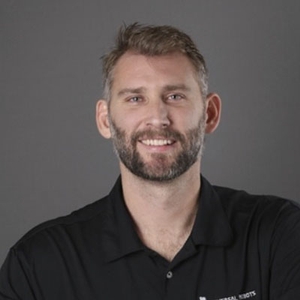 |
Senior Channel Development Manager |
How to Financially Account for Robotics-as-a-Service Models
Jonathan Marseglia, Director of Financial Strategy and Head of Tax, Formic
In 2019, the Financial Accounting Standards Board released updates to the lease accounting standards, namely ASC 842. Under the new lease accounting standards, every lease must be included as both an asset and a liability on the balance sheet. This can cause problems for customers who have debt covenants that restrict the amount of liabilities that they are permitted to carry on their balance sheets. Lease accounting is both confusing and problematic, and while the new standards have been implemented, little guidance has been given around accounting for as-a-service models that include tangible assets. A lease is a special subset of a contract and therefore, lease accounting is the exception to the rule. Formic’s presentation will address the new lease accounting rules, including the definition of a lease. We will discuss the requirements for a contract to be a lease. We will discuss the required control elements and the required economic benefit elements to prove when a lease is a lease. We will also discuss the right to direct the use requirement and how all of these requirements interact to create the lease environment. Finally we will also address why these rules matter and why it is important for companies to ensure that their as-a-Service models do not run afoul of the new lease accounting rules. Proper accounting is important for both public and private companies. Improper accounting on the financial statements can lead to the determination that the financial statements contain a material misstatement for the company’s stakeholders. |
|
 |
Director of Financial Strategy and Head of Tax |
Image Processing Fundamentals
Heiko Eisele, President, MVTec USA
This course will cover 2D & 3D machine vision camera calibration for machine guidance including for industrial robots and basic information on the types of industrial robots in use today. Along with the various methods for representing 3D positional data for both machine vision and industrial robotics and how to ensure a machine vision system will provide useful positional data to an industrial robot for a Vision Guided Robot (VGR) application. Details of how to implement a fixed mounted and robot mounted 2D/3D VGR application as well as examples of each will also be presented. |
|
 |
President |
Industrial Robotics AI and Its Applications
Eugen Solowjow, Head of Research Group, Siemens
Over the last years, the combination of AI, machine learning and robotics started to transition from lab applications to production facilities. These advanced robotic systems enable the automation of industrial processes that were impossible to automate up until now. They are highly flexible and require a minimum of set up and calibration time. The underlying deep learning-based methods are increasingly reaching a maturity level that is sufficient for industrial applications. We see products and offerings in various robotics domains and impressive growth.
|
|
 |
Head of Research Group |
Smart Robotic Cells: Labor Shortage Solutions for Surface Finishing Applications
Satyandra K. Gupta, Co-Founder & Chief Scientist, GrayMatter Robotics
Many manufacturing companies are facing an acute shortage of qualified workers. They need automation technologies to speed up production and achieve consistent quality. Surface finishing represents a large portion of manufacturing operations. Sanding is a widely used surface finishing process during the manufacturing of parts made from metal and composite. Sanding is an ergonomically challenging operation. Traditionally robots are used only in mass-production applications. The manual programming of robots is economically not viable in high-mix applications. Therefore, sanding has remained a manual operation in high-mix applications. The advent of human-safe robots is enabling robots to collaborate with humans on ergonomically challenging tasks and amplify human productivity. This enables robots to perform a large fraction of sanding operations and only requires humans to perform the final touch-ups. The availability of 3D vision and force sensors enable robots to operate without custom fixtures and accommodate part and fixture variability. These recent advances in robotics make it possible for robots to be used in high-mix sanding applications. This presentation will present an overview of physics-informed AI, enabling smart robotic cells to program themselves from the high-level task descriptions. It also allows robotic cells to utilize sensor data to adapt the programs to deliver efficient and safe operational performance in high-mix sanding and polishing applications. These surface finishing solutions ensure quality consistency and increased productivity and enable manufacturers' production scalability. |
|
 |
Co-Founder & Chief Scientist |
Digital Servo Amplifier Basics
Michael Miller, Senior Manager, Regional Motion Engineering, Yaskawa America, Inc.
Basic operation of a digital servo amplifier, including servo control loops, tuning a servo system, defining system bandwidth and how to select the proper amplifier for applications. Basics of the major networks/field busses and advantages/disadvantages of each. |
|
 |
Senior Manager, Regional Motion Engineering |
KEYNOTE: How Digitalization Has Transformed Manufacturing - and Our Future
Barbara Humpton, President & CEO, Siemens Corporation USA
The term “Industry 4.0” went mainstream about 10 years ago. Yet in that short time, we have achieved milestones in digitalization that all but the most optimistic of us would have thought impossible. We can commission virtually. We can run incredibly small lot sizes efficiently. We are gathering, storing and analyzing quantities of data that would have staggered our ten-year-ago selves. And we have proven that we can use that data to simulate and optimize around quality, cost, sustainability, and many other outcomes. Imagine what the next ten years will bring! Join this talk to explore where we go next, what it will take to get there, and what key issues we as an industry will be confronting and managing along the way |
|
 |
President & CEO |
Advanced Robotics Application
Houssaine Waled, Senior Staff Systems Engineer, KUKA Robotics Corporation
Advanced robotics applications merge a variety of technologies and devices. This includes collaborative robots, mobile robots, smart sensors, vision, both 2 and 3D, Artificial Intelligence, IIOT, and so on. To bring such projects to fruition, tremendous challenges in component selection, integration, maintenance, support, and know-how transfer must be overcome. This presentation will introduce the different technologies, hardware, and software involved in advanced robotics applications; discuss methodologies for selection without being distracted by buzzwords and overinflated promises.
|
|
 |
Senior Staff Systems Engineer |
Automated Manufacturing Scale-Up: Planning for Success
Chris Knorr, Vice President, Business Development North America, Eclipse Automation, Part of Accenture
Many manufacturers launching new products are challenged with how to scale their manufacturing operations, with capital equipment investment being a major consideration. The old saying of ‘failing to plan is a plan to fail’ holds very true as it relates to creating a manufacturing scale-up roadmap. Investing in early planning can help ensure a successful manufacturing ramp-up and optimize ROI by planning the right amount of capital spend at the right time. This session will provide you with key considerations to implement the right automated manufacturing ramp-up plan for your new product manufacturing scale-up, including:
By creating a well-thought-out plan, mitigating risks early -- and choosing the right partners for success, you can optimize your CAPEX spending and deliver on time and on budget. |
|
.png) |
Vice President, Business Development North America |
How to Choose the Right Type and Level of Collaborative Robot for Your Application
Joshua Alphonse, Head of Mobile Robotics US, ABB Inc.
Session details to come |
|
.jpg) |
Head of Mobile Robotics US |
Motion Controllers, Programming, and System Design Basics
Jim Wiley, Product Manager, Parker Hannifin
Overview of the software and hardware elements necessary to build a motion system, and how to integrate motion with other systems when designing a machine. Basic motion control software and programming languages. |
|
 |
Product Manager |
When and Where to Use Cartesian Robots
Eric Rice, Product Market Manager, Festo Corporation
Along with articulated, SCARA, and delta robots, cartesian robots are one of the primary categories of robotic systems used to solve material handling tasks. Like all robotic systems, cartesian robots fit better in some applications than others. This presentation will focus on the criteria to consider when deciding whether to use a cartesian robot or not, including payload, reach, speed, degrees of freedom, environment, end-of-arm tooling, installation, and commissioning. Cartesian robots are built using precision linear actuators for the X, Y, and Z axes. Systems built upon two (X-Y or Y-Z) and three (X-Y-X) linear axes are available. Onto the Z-axis of a cartesian robot an additional axis can be mounted to provide rotation around the Z-axis (yaw). The goal of this presentation it to provide automation users and machine builders with a set of practical guidelines to use when selecting the best robot system for their material handling applications. Other major robot types will be used for reference and comparison, but the focus will be on the advantages, disadvantages, and other considerations of cartesian robots. |
|
 |
Product Market Manager |
Non-Visible Imaging: Infrared Technology and Applications
Martin H. Ettenberg, CEO/President, Princeton Infrared Technologies, Inc.
Non-visible imaging methods offer unique benefits for a variety of vision tasks. In this session, you’ll learn more about infrared and thermal techniques and better understand if non-visible imaging solutions are right for your specific needs . |
|
 |
CEO/President |
Vision System Design
David Dechow, Industrial Factory Solutions Architect, Motion AI
Perry C. West, President, Automated Vision Systems, Inc.
Ultimately the value of any machine vision technology lies in the successful implementation of a systems solution for a task in an automated process. The knowledge gained in cameras, lighting, optics, and image processing is the foundation required to move on to the successful design of a working machine vision system. In this course, you will learn the role of machine vision systems design in the broader task of systems integration and the general steps and strategies involved in the design of a vision system, including selection of components in typical use cases, and specification of the implementation of those components. The information provided will enable you to participate in and support a team delivering practical machine vision to plant floor automation.
|
|
 |
Industrial Factory Solutions Architect |
 |
President |
3D + AI in EV Battery Inspection
Chris Aden, Sr. Director of AI Solutions, LMI Technologies
The growing demand for EV batteries has already permanently transformed the car manufacturing landscape, with almost all major automotive companies now operating electric vehicle production lines. While electric vehicles do have less moving parts than their internal combustion engine (ICE) counterparts, manufacturing them is still extremely complex. From stators and rotors, to intricate wiring harnesses, LMI is involved with many EV manufacturing applications. But the heart of an EV is its battery, and this is where machine vision solutions have become essential to market success. In this presentation an LMI Technologies speaker will look into the different ways 3D scanning and inspection is used in EV battery manufacturing to ensure maximum product quality, longevity, and safety. The discussion will include 3D sensing applications in key EV manufacturing steps such as (1) electrode manufacturing, (2) cell assembly and packaging, (3) cell-to-module assembly, (4) module-to-pack assembly, and (5) final installation inspection. We will cover how 3D smart sensors and their built in, onboard measurement tools are used in every stage of these manufacturing processes. The discussion will center around the ability of 3D imaging to generate critical shape data (i.e., height information) of the target object that is not possible with 2D inspection that can only capture intensity-based information (i.e. greyscale).
The presentation will showcase how products that are nearly identical and need to be measured for tolerance or conformity are probably easier to solve using a stack of traditional algorithms, whereas products such as EV batteries that require a subjective evaluation, sometimes from an experienced visual inspector, are highly suitable for deep learning based inspection systems. Attendees will come away with a deeper understanding of how 3D (for image acquisition) and AI deep learning systems (for image evaluation) can be integrated to create more accurate, reliable, and sustainable industrial inspection systems in EV battery manufacturing. |
|
 |
Sr. Director of AI Solutions |
Programming industrial robots is highly complex and often time-consuming. This raises a high barrier for small and mid-sized businesses that lack the resources to build up, program and maintain automated processes. However, the shortage of skilled workers –especially in high-skilled jobs like welding– forces businesses to move towards automation and robotics.
A user-centric programming approach based on motion, rather than program code, allows easier access to industrial robots for a wider group of users. Demonstration-based programming can ensure that robots can be used in a more flexible and diverse industrial context and allows a more dynamic and collaborative human-robot interaction. By mimicking the manual processes that have been established and already optimized before, robots are taking on tasks in work environments that are harmful to humans. Within the next several years, the manufacturing market will make a radical shift since new technologies in robot teaching will introduce a new era of human-robot interaction.
|
|
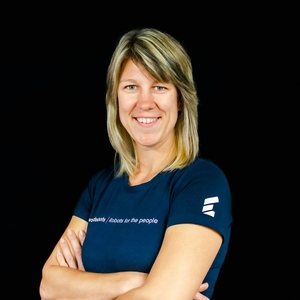 |
Vice President |
Successful Automation Strategies: Fast, Wide Scale Implementation for Small or Global Organizations
Jerry Perez, Executive Director - Global Accounts, FANUC America Corporation
Many automation plans and roadmaps either lose steam, focus, fail to return on investment, or all the above.
Do you have a roadmap? Are you as far along on your automation blueprint as planned? Are you getting the return that you promised? Do you know how to select your integrator? Where do you start? |
|
 |
Executive Director - Global Accounts |
Why Cobots are the First Choice for Many Small to Medium-sized Companies
Adam Willea, District Manager, FANUC America
If you are a small- to medium-sized company considering your first robot, it’s more than likely that a cobot has risen to the top of your list of choices. There are so many reasons to consider a cobot, including:
Bottom line? Cobots are already helping companies achieve higher productivity, reliable operations, and higher profits. If you’re thinking about using a cobot, this session is for you. |
|
 |
District Manager |
CMCP Course Review & Exam Prep
Review the CMCP courses and prepare for the certification exam. |
Advanced Color Machine Vision & Applications
Romik Chatterjee, VP Business Development, Graftek Imaging
Explore the different levels of image quality at the sensor level. Details relating to quantum efficiency, dark noise, signal to noise ratio will be discussed in detail. In addition to topics related to area scan cameras, the proper usage of line scan and TDI cameras will be reviewed. Sensor size classification and relationship to the camera’s lens mount will be covered. |
|
 |
VP Business Development |
AI-Powered Inspection & Defect Detection
Mahesh Sudhakar, AI Software Engineer, Musashi AI
Martin Hennemann, Product Manager, IDS Imaging Development Systems GmbH
Rajesh Iyengar, Co-Founder and CEO, Lincode Labs Inc.
Join these industry experts for insights on how AI is changing the game for industrial inspection and defect detection:
|
|
 |
AI Software Engineer |
 |
Product Manager |
 |
Co-Founder and CEO |
Application-Focused, Automated Platform: Enter the New Era of Collaborative Automation
Kristian Hulgard, General Manager, Americas Division, OnRobot
The flexibility, ease of use, and fast ROI of collaborative automation changed the game for small and mid-sized manufacturers. But what’s next? How can you plan for additional efficiencies and productivity improvements across your shop floor? How can you make sure you’re ready for new technologies without getting painted into a proprietary corner? Ultimately, how can you keep your efforts (and budget) focused on your specific application and business needs rather than getting bogged down in all of the robotic integration hardware and software details? Industrial automation continues to move towards open, plug-and-play hardware and “no-code” programming. These changes will speed deployment and enable greater flexibility and scalability for long-term ROI. That’s critical for manufacturers to maintain competitiveness and profitability, even in the face of ongoing labor and supply chain challenges. Ultimately, these technology changes will extend the promise of collaborative automation for ease-of-use, flexibility, and fast ROI to more robotic applications. In this session, we’ll explain how collaborative automation is evolving away from complex, proprietary deployments, and the implications of those changes to small and mid-sized manufacturers. We’ll also demonstrate what evolutions such as no-code programming can look like for common manufacturing applications such as machine tending. You’ll learn when and how to consider new approaches to bring the advantages of collaborative automation throughout your shop floor.
|
|
 |
General Manager, Americas Division |
Integrated Lighting Solutions Help Make Flexible Manufacturing Possible
Steve Kinney, Director of Training, Smart Vision Lights
When it comes to traditional machine vision solution designs, the light is the tail on the dog. The camera and, more recently, software control the system. The light’s job was to take up as little space as possible while setting the stage for the camera and software. Today’s growing demand for flexible manufacturing lines that can produce a wider variety of products with the same tooling, increasing OEM productivity while constraining costs, is changing the role lights play in the machine vision solution. Flexible manufacturing -- often using robots for assembly and/or inspection, needs light systems that offer a number of lighting systems and methods -- performed asynchronously on demand. This is leading to machine vision solutions that incorporate bright field, dark field, multispectral, and multi-focal point capabilities – among others -- along with intelligent control systems necessary to generate the different light fields on demand. This presentation will look at how machine vision light designs are adapting to accommodate the growing needs of flexible manufacturing and robotic systems. |
|
 |
Director of Training |
Introduction to Robot Risk Assessment
Jeff Fryman, Principal Consultant, Association for Advancing Automation
There are more than 2.7 million industrial robots safely operating in factories worldwide, and the robotics industry can take pride in its impressive safety record. For nearly forty years, A3 Robotics – formerly the Robotic Industries Association – has taken a lead role in assuring that the robotics industry continues to proactively assess the safety environment and provide safety resources as robotic applications continue to expand. At the forefront of A3 Robotics’ leadership role in industrial robot safety is the development of the ANSI/RIA R15.06-2012 safety standard. Join A3's lead robot safety trainer to learn to help you keep your team safe and learn the basics of conducting a risk assessment for your facilities. |
|
 |
Principal Consultant |
Cobots in Fortune 500 Manufacturing: Rapid Deployment, Fast ROI
Joe Campbell, Head of Strategic Marketing, Universal Robots
Collaborative robots have opened up new opportunities for automation in small and medium-sized manufacturing companies who are struggling with the manufacturing labor crisis. These companies are often new to automation, with limited experience and resources, and cobots have brought significant improvements in productivity and machine utilization. But are cobots finding homes in large companies, those with deep automation experience and resources? The answer is a resounding YES! Joe Campbell from Universal Robots will talk about the different approaches large companies are taking with collaborative automation and what benefits they are generating with cobots. Joe will also present multiple large company case studies from major application segments. Key Learnings:
|
|
 |
Head of Strategic Marketing |
The Advantages of Optical Filters in Non-Visible and Visible Applications
Georgy Das, Director of Systems & Training, Midwest Optical Systems
Whether in a complex automated process or a simple barcode reader, optical filters are vital to obtaining high-quality images that are consistent and repeatable. In simple terms, optical filters control the type and amount of light entering the imaging system. Additionally, they can be designed to protect the lens and system. Knowing why, when, and how to use optical filters to control lighting is the key to using them efficiently. By using filters, users can easily maximize contrast, improve color rendition, improve subject, and feature recognition, establish repeatability with the imaging system, and otherwise control light reflected from an object. As part of this presentation, we will explore real-world visible and non-visible imaging applications being used in the field, as well as how optical filters play a vital role in producing consistent, reproducible results. |
|
 |
Director of Systems & Training |
CVP-Basic Exam (optional/additional fee required)
Additional fee required for certification exam. |
CMCP Exam (Optional. Additional Fee Required)
CMCP Certification Exam (Optional. Additional Fee Required) |
Automation Safety Advances
Henry Toal, Sales Director, Inxpect
Jenny Tuertscher, Vice President Technical Safety, Fortress Safety
Learn about some of the latest advances in automation safety with these expert speakers:
|
|
 |
Sales Director |
 |
Vice President Technical Safety |
Comparing 3D Vision Technologies for Warehouse Robotic Applications
Stephen Se, Senior Engineering Manager, Depth Sensing, Teledyne FLIR - Machine Vision
Depth perception is required by a number of warehouse robotic applications, including autonomous navigation, pick and place, palletizing, and package optimization. The most common methods to achieve depth perception are stereo, time-of-flight, and lidar. Choosing which method to apply depends on factors such as range, accuracy, ruggedness, cost, and weight. In this talk, we will compare the various 3D vision technologies and discuss their trade-offs pertaining to these applications. We will also provide instructions on how to build a compact and affordable embedded 3D vision system using off-the-shelf components and open-source software. |
|
-1.jpg) |
Senior Engineering Manager, Depth Sensing |
Defining Success: How to Ensure Your Cobot Project is Valuable
Doug Grogg, Regional Sales Manager, Yaskawa
Join Doug Grogg, Regional Sales Manager from Yaskawa Motoman as he discusses several of the "why" influences for your automation solution. Looking at an organization's specific project justifications can help define individual steps to success. From labor turnover and cost reduction to quality improvements and improved scalability, there are a variety of justifications for a given collaborative robot application while understanding your goals can help ensure a successful implementation. |
|
 |
Regional Sales Manager |
Leveraging TSN (Time-Sensitive Networking) for Converged Automation Networks
Thomas J Burke, Global Strategic Advisor, CC Link Partner Association (CLPA)
What is the buzz about the many technology innovations available -- and how do we achieve our goal of a digital transformation by leveraging these mystical, magical technical innovations? Digital transformation really relies on connecting all these disparate devices and networks and gathering data and transforming it into information that can be shared between operations technology (OT) and information technology (IT). One of the essential parts of connectivity is ensuring the reliability of the data being acquired from these disparate devices and networks. When you are making intelligent decisions and converting the data into information, it’s very important that you are getting reliable data to make these intelligent analytical decisions. Sampling data needs to be deterministic to make intelligent conversions of the data. Writing data down to these disparate devices and networks must also be deterministic. When you are changing the set point of some device, you need to guarantee that the data is written according to the timing specified. This session focuses on leveraging the best technological innovations to help you achieve your digital transformation and specifically focuses on connectivity and communication between devices in the OT world, as well as transforming data into information and sharing that information from the OT world into the IT world. It will also cover accuracy and reliability of data for digital transformation. Learn how all the industrial Ethernet standards organizations are working together to leverage TSN technology and provide the ability for control and configuration applications to run simultaneously on the same physical wire. Also, it allows the highest speed performance and deterministic data reliability. |
|
 |
Global Strategic Advisor |
Build vs. Buy: Open-source Operating System for Robotics and Edge-AI Applications
Shanif Merchant, Chief Product Officer, Numurus
Small to medium-sized robot OEMs are faced with many challenges when they set out to build products to address customers’ demand to adopt industrial automation solutions that are at the cusp of significant expansion due to the acute labor shortages around the globe. These companies are often, and understandably, focused on achieving higher-level outcomes for their end-customers of robot reliability, accuracy, ease of use and cost. Building software for a robot is a complex endeavor requiring integrating a variety of software packages and an extensible operating system that can host complex robot applications and enable smarter connected devices through 4th industry technologies of EdgeAI, Cloud and IoT. The speaker will discuss the important considerations leaders of small and medium-sized robotics businesses must take into account as they deliberate the operating system build vs. buy decision. The considerations the speaker will address include: open-source vs. closed-source operating systems, EdgeAI, artificial intelligence life cycle management, and development and sustainment costs. |
|
 |
Chief Product Officer |
May the Quartz Be With You. Learn How Quartz Derived Sensors Can Help Master the Most Challenging Motion and Assembly Projects
Aaron Donlon, Product Manager, Epson Robots
Automation is a rapidly growing area in manufacturing, one that shows no signs of slowing down. The drive for higher precision, speed, flexibility, and quality mandates the use of high-tech solutions to improve motion control and fully integrated robot peripherals. In this presentation you’ll learn about some of the key pain points and trends that are impacting manufacturing in the automotive space, peek under the hood at the quartz-based core technology enabling advanced robot motion. In addition learn how advanced assembly operations like gear meshing can be performed utilizing quartz-based technology. |
|
 |
Product Manager |
A robot arm is said to be in a singularity when its end-effector instantaneously loses the ability to move in certain directions, even though no joint is at a limit. A singularity is a physical blockage, but it is also associated with some numerical problems. While most robots cannot pass through singularities in Cartesian mode, they can pass near them, which typically leads to a severe slow-down of the end-effector. Singularities are therefore obstacles in the workspace of a robot and should be avoided at the design stage of a robot cell. In this presentation, the singularities of several typical robot arms will be described and strategies for avoiding these singularities will be given.
|
|
 |
Cofounder |
KEYNOTE: How the 5G Platform is Enabling the Next Generation of Lean Production
Jan Diekmann, Technical Account Manager, Ericsson
5G is much more than a network—it’s a platform for innovation providing global scale and enabling manufacturing use cases that we haven’t even dreamed of yet. As a new lean manufacturing tool, 5G is taking production into the age of digitalization. It enables lean manufacturing processes and the ability to truly take advantage of technologies like the cloud, automation, digital twins, AI, AR and IIoT. The benefits of 5G support technologies like process automation, remote monitoring and collaborative robots. It also allows for higher flexibility, lower cost, and shorter lead times for factory floor production reconfiguration, layout changes, and alterations, which will result in significant improvements. In this session, you’ll learn how to apply 5G’s capacity to handle massive amounts of data with low latency to support lean methodologies in a powerful way, unlocking new value and even taking lean concepts beyond the factory. |
|
 |
Technical Account Manager |
Metrology & 2D Calibration Techniques
Perry C. West, President, Automated Vision Systems, Inc.
Participants will gain an understanding of techniques for creating systems that yield reliable and repeatable measurement results. Practices for proper calibration of imaging systems ranging from appropriate usage of targets to accurate algorithm deployment will be discussed. How to manage images correctly to create repeatable results will be reviewed. Anyone who is developing metrology systems or having and need for accurate measurements will benefit from this curriculum. |
|
 |
President |
Enabling Advanced Robots to Intelligently Operate in Very High-Mix Environments
Tiffany Cappellari, Research Engineer, Southwest Research Institute
Modern robotics solutions seem to be becoming increasingly “intelligent” in their ability to perceive their environment and act accordingly. The ultimate goal of a robotic system is one that programs itself without any human intervention required. One where you can put a never before-seen part in its vicinity, tell it to start, and then come back an hour later with a completed inspection, sanding, painting, or any other desired process. Many of the latest open-source software packages are starting to enable some of these capabilities. This talk will go over a step-by-step process of how a system can go from having no knowledge of a presented part to safely executing a precise, desired process with little to no human intervention. Also, it will cover what application spaces are appropriate for such a technology, given the current state of robotics. |
|
 |
Research Engineer |
How Thermal Imaging Inspection is Improving Package Seal Integrity
David Bursell, Vice President of Business Development, MoviTHERM Advanced Thermography Solutions
Package seal integrity is critical for today’s manufacturers. For example, in the food and beverage space, faulty packaging limits the shelf life of a product, increasing waste, especially for perishable items where package leaks accelerate the decomposition process. For the pharma and health industries, package sterility ensures product efficacy and safeguards end users. As part of a quality control program, companies randomly sample packages and conduct leak tests on package seals. A typical test method involves placing the package in a vacuum chamber and submerging it in water. As internal pressure builds in the package, leaks become visibly detectable by escaping air as bubbles. While effective at detecting leaks on a single test sample, this approach is laborious and only addresses some packages produced. Over the past twenty years, infrared (IR) camera technology developments have made IR cameras more rugged, smaller in size, and less expensive. New applications for infrared cameras and non-contact temperature measurement are continually developing as the technology becomes more assessable. Automating infrared inspection for package seal integrity testing is one application that continues gaining traction. Using infrared inspection as part of a quality control program allows for inspecting all package seals in the production line. Companies can ensure package seal integrity, promote product quality, and elevate customer satisfaction by implementing complete package line inspection. |
|
 |
Vice President of Business Development |
The Key to Virtual Factories
Ricardo Burnanello, SVP, IoT Platforms, Telit IoT Solutions Inc.
The connected factory is democratizing another innovation — the virtual factory. Without critical asset connection at the IoT edge, the virtual factory couldn’t have been realized by anything other than brand-new factories and technology implementations. The benefits of virtual factory technologies like digital twin are within reach for greenfield and legacy implementations. The industry used to see a distinction between IoT-enabled greenfield technology in new factories and legacy technology in older ones. Data flowed seamlessly from IoT-enabled machines to enterprise systems or the cloud for advanced analytics in new factories’ connected assets. In older factories, while data wanted to move to the enterprise systems or the cloud, it hit countless walls. No matter the age of the factory or equipment, everything looks alike. When manufacturing companies invest in machines, the expectation is this asset will be used for a decade or more. It is important to have technologies available to new and legacy machines and systems. In this session, Telit - a global enabler of the Internet of Things - will discuss:
|
|
 |
SVP, IoT Platforms |
Increase Speed & Throughput with AI-Powered Robots
Anne Marie Neatham, Chief Operations Officer, Kindred
Innovation has moved beyond automation and robotics, and Artificial Intelligence (AI) is now the emerging technology proving to increase e-commerce speed, throughput, accuracy, and transparency. Implementing AI into business operations can generate financial advantages, according to the McKinsey Global Institute. They estimate that corporations who are early adopters of AI can potentially double their cash flow and gain three times more economic benefits from AI than late adopters. Anne Marie Neatham, Kindred COO, will detail how AI is transforming fulfillment centers and helping supply chain leaders meet ever-increasing volume demands. In addition, AI delivers real-time, actionable data that drives operational efficiencies and provides competitive advantages in the marketplace. Executives and managers responsible for improving service levels in e-retail, parcel and logistics environments will gain the knowledge to make confident business investments in AI. Attendees will learn how:
|
|
 |
Chief Operations Officer |
LiDAR Data Pre-Processing: Challenges & Solutions
Murat Atalay, Director of Customer Engagement and Solutions, Outsight
Beyond automotive applications, a wide range of other automation use cases can also benefit from the value of 3D LiDAR data. These use cases include mobile robots (AMR, AGV), but they also include applications for safety, security, monitoring people flow, and industrial use. With increasing performance and decreasing costs, LiDAR sensors have the potential to change how machines perceive and interact with the world. In this presentation will show how a new category of software, a real-time pre-processing engine, changes the game, allowing application developers and integrators to seamlessly use LiDAR data from any hardware supplier. Specific use cases and real-life LiDAR recordings will be used to illustrate the practical applications. |
|
 |
Director of Customer Engagement and Solutions |
Understanding the Benefits in Automation for the Construction Industry using 3D Printing/Additive Manufacturing
Gene Edielman, Co-Founder, Azure Printed Homes
The construction industry relies upon outdated methods and materials, delivered by a labor force in short supply. The construction sector is also the largest global consumer of raw materials and produces about 20% of the world's total carbon emissions. With the U.S. housing shortage estimated at 3.8 million homes and with many experts suggesting the real figure is higher and rising quickly, using robotics in a factory to 3D print homes efficiently and quickly is the best answer to solving the global housing crisis.
|
|
 |
Co-Founder |
Advanced Image Processing
David Zerkler, Senior Manager - Machine Vision Learning, Zebra
The ability to correctly analyze and classify details and particles in an image can be critical to the success of an imaging application. Strategies around thresholding, advanced morphology and the correct usage of particle filters will be covered. Additional topics include training strategies, images transforms, and image filtering. |
|
 |
Senior Manager - Machine Vision Learning |
Advanced Vision System Integration
David Dechow, Industrial Factory Solutions Architect, Motion AI
Robert Tait, Partner, Optical Metrology Solutions
Producing a reliable vision system is no accident. It begins with creating a strong specification that carries through from component selection to system development and finally on-line deployment. Successful and efficient vision systems integration in an automation environment can be achieved by following a general well-accepted workflow that will guide the execution of each phase of the process. It’s important also to be able to identify certain classic integration challenges that may happen along the way. This course will take you through the steps needed to achieve vision system integration success and will detail practical examples of typical use cases and the annoying but sometimes-amusing pitfalls that can (and will) occur. |
|
 |
Industrial Factory Solutions Architect |
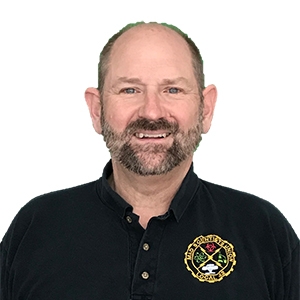 |
Partner |
